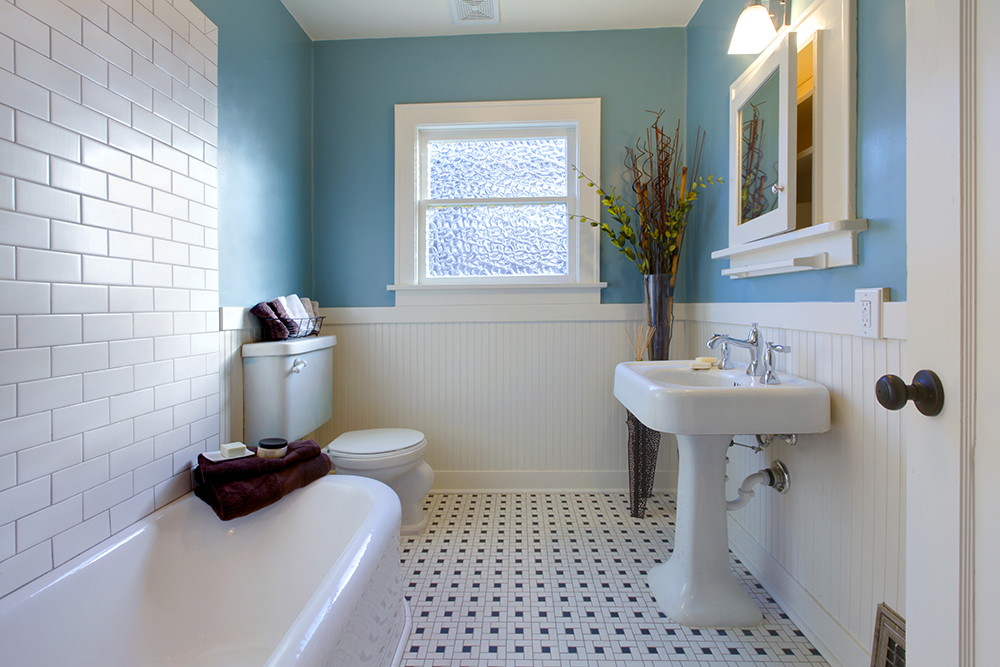Attractive and energy-efficient bathrooms

I’m designing and selecting products to remodel my bathrooms. What should I consider for energy efficiency?—Sandi
The use of several bathrooms can be responsible for a significant amount of your utility bills year-round. With whirlpools and other comfort appliances, bathrooms are used for more hours today than ever before.
Flushing a toilet is the major cold water consumer in most bathrooms and the toilet is typically replaced when remodeling. The maximum water usage allowed for new toilets is 1.6 gpf (gallons per flush). Most major plumbing fixture manufacturers also offer 1.28-gpf super-efficient standard-flush and dual-flush models. Since fewer of these super-efficient toilet styles are available, select the toilet first and then match the other fixtures to it.
For task lighting, install an LED light mounted horizontally above the mirror, or consider two LED wall sconces mounted alongside the mirror for shadow-free lighting when applying makeup, brushing teeth or shaving. Daylight (color 4000K or higher) and high CRI (color rendition index) LED bulbs often make colors look similar to sunlight.
Showerhead design impacts both cold and hot water consumption. The maximum water flow rate is 2.5 gpm (gallons per minute) for showerheads, but some low-flow showerheads use half this much. If you have tried older low-flow showerheads and were dissatisfied, the new ones provide a more forceful shower. Select a showerhead with a trickle valve to slow the water flow while you are lathering.
Warming up the bathroom
Bathroom heating is another energy consideration because you want the heat quickly, but for only a short time. A simple 120-volt or more powerful 240-volt radiant system can make you feel comfortably warm without having to heat all the air in the bathroom. This feels similar to standing outdoors in the direct sun on a chilly day.
Electric radiant floor or wall heating is a good choice. Decorative or mirrored radiant wall heating panels warm up and produce heat quickly so they are ideal for unplanned times in the bathroom. Electric in-floor radiant heat is very comfortable for a bathroom and easy to install under tile. Since it takes somewhat longer to warm up, put it on a timer for typical bathroom usage times.
JAMES DULLEY is a nationally syndicated columnist who writes on energy efficiency and do-it-yourself energy topics.

